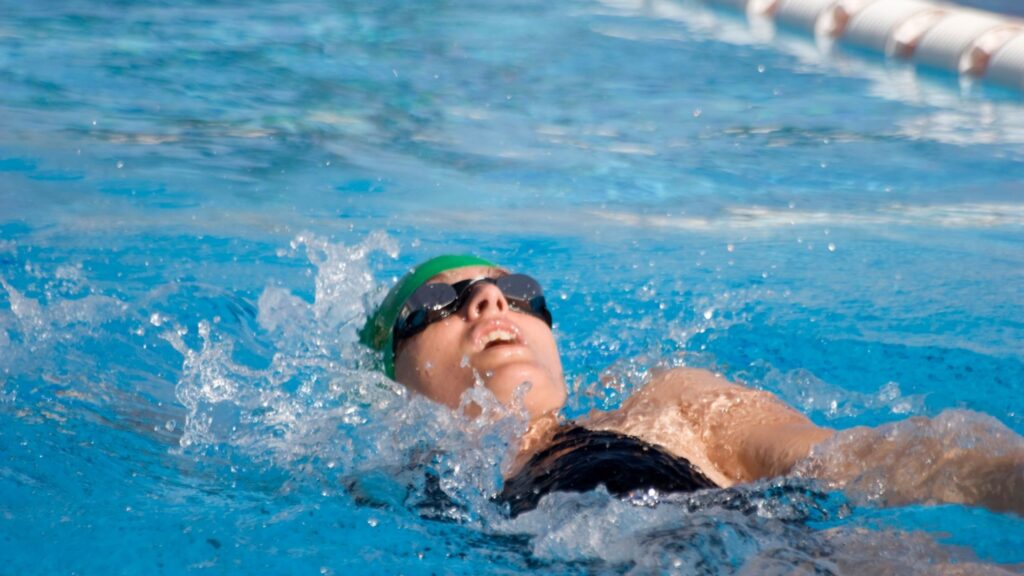10 Amazing Health Benefits of Swimming You Didn’t Know About

Swimming is more than just a refreshing summer activity, it’s one of the most effective and enjoyable full-body workouts available. Whether you’re gliding through laps in a pool or engaging in structured swimming exercises, this low-impact workout offers benefits that extend beyond the surface. From cardiovascular endurance to joint health, and from mental clarity to weight loss, swimming taps into multiple dimensions of wellness that many people overlook.
As an aerobic activity that engages nearly every muscle group, swimming exercises are gaining popularity among fitness enthusiasts of all ages and skill levels. The resistance provided by water makes it a challenging yet gentle workout that suits beginners and elite athletes alike. In this blog post, we’ll dive deep into ten surprising health benefits of swimming that you might not know — and why it deserves a permanent place in your weekly fitness routine.
1. Swimming Is a Full-Body Workout That Builds Strength and Endurance
Swimming is one of the few forms of exercise that engages nearly all the major muscle groups at once. From your arms, legs, and core to your back and glutes, every stroke works different parts of the body simultaneously.
Why It’s Effective:
-
Water resistance creates a natural form of strength training.
-
It enhances muscle tone and builds lean muscle mass without the strain of weights.
-
Engaging in regular swimming exercises boosts both aerobic capacity and muscular endurance.
Full-body workout benefits of swimming include:
-
Improved posture
-
Enhanced muscle flexibility
-
Balanced body development
It’s an ideal choice for people who want a total fitness package from one activity.
2. It’s a Great Way to Burn Calories and Lose Weight
Swimming isn’t just good for your health — it’s a powerful tool for managing and reducing weight. One hour of moderate swimming can burn between 400 to 700 calories, depending on the intensity and swimming style.
Swimming for Weight Loss:
-
It elevates your heart rate without stressing your joints.
-
Continuous movement helps your body burn fat efficiently.
-
Cold water forces your body to use more energy to maintain internal temperature, which may increase calorie expenditure.
Swimming for weight loss is especially beneficial for individuals who struggle with high-impact exercises like running or HIIT. It’s easier on the joints while still offering substantial calorie-burning potential.
3. Improves Cardiovascular Health
Swimming is an excellent cardiovascular exercise that strengthens the heart, improves circulation, and supports overall heart health.
Benefits to the Heart:
-
Lowers blood pressure and bad cholesterol (LDL)
-
Increases stroke volume — the amount of blood pumped per heartbeat
-
Enhances lung capacity and oxygen intake
Just like cycling or jogging, swimming improves endurance and boosts cardiovascular efficiency — but with significantly lower wear and tear on the body.
4. Enhances Flexibility and Range of Motion
Swimming requires your body to reach, stretch, twist, and pull in ways that many other exercises don’t.
Flexibility Boosters:
-
The stretching movements used in strokes like freestyle and backstroke increase flexibility in the shoulders, hips, and legs.
-
The buoyancy of water reduces gravity’s strain, allowing for a wider range of motion.
-
Water-based exercises often involve dynamic movements that maintain and increase joint mobility.
Regular swimming exercises can improve your body’s flexibility, making everyday tasks easier and reducing the risk of injury.
5. Low-Impact on Joints and Suitable for All Ages
Unlike running or jumping workouts, swimming is gentle on the joints. This makes it particularly ideal for:
-
Seniors
-
Pregnant women
-
People recovering from injuries
-
Those with arthritis or joint pain
Why Swimming Is Joint-Friendly:
-
Water supports up to 90% of your body weight, reducing pressure on the spine and knees.
-
It allows safe rehabilitation for individuals healing from injury.
-
Repetitive low-impact movement helps maintain joint health without overexertion.
For those looking for safe and sustainable exercise, swimming offers a rare combination of safety and effectiveness.
6. Boosts Mental Health and Reduces Stress
Is swimming good for mental health? Absolutely. Swimming has been shown to reduce stress, anxiety, and symptoms of depression.
Mental Health Benefits:
-
Endorphin release while swimming improves mood.
-
The rhythmic nature of strokes and breathing can be meditative, similar to yoga.
-
Immersion in water reduces sensory input, promoting mental calmness.
7. Improves Sleep Quality and Reduces Insomnia
One of the lesser-known benefits of swimming is its impact on sleep. Because it engages the entire body and mind, swimming can lead to deeper, more restful sleep.
How It Helps:
-
Promotes muscle relaxation and reduces cortisol (stress hormone) levels.
-
Enhances the production of melatonin, the hormone responsible for regulating sleep.
-
People who perform regular aerobic exercise like swimming fall asleep faster and experience better sleep quality.
Swimming is especially helpful for older adults, who often struggle with insomnia or disrupted sleep cycles.
8. Suitable for Beginners and Easy to Learn
Unlike some forms of exercise that require equipment or specific skill sets, swimming is accessible to most people and easy to get started with.
Swimming Exercises for Beginners:
-
Freestyle (front crawl): Best for cardio and endurance
-
Backstroke: Good for posture and upper body alignment
-
Breaststroke: Slower but easier to control breathing
-
Flutter kicks and water jogging: Great warm-up exercises
Swimming exercises for beginners often start with simple floatation support and gradually build up to more structured routines. Many local pools offer swimming lessons for adults to help you build confidence and technique.
9. Outperforms Running in Several Key Areas
Swimming vs running is a common debate in the fitness world. While both offer cardio benefits, swimming provides unique advantages that make it a better choice in certain contexts.
Swimming vs Running — Key Differences:
| Factor | Swimming | Running |
|---|---|---|
| Impact on Joints | Low | High |
| Muscle Groups Worked | Full-body | Primarily lower body |
| Injury Risk | Lower | Higher |
| Cooling Mechanism | Water naturally cools the body | Sweat-dependent |
| Calorie Burn (per hour) | ~500–700 | ~600–800 |
Swimming wins in terms of joint preservation, muscle diversity, and total body engagement, making it a smarter choice for long-term fitness.
10. Promotes Better Breathing and Lung Health
Swimming trains your lungs to take in and use oxygen more efficiently, thanks to controlled breathing techniques.
Breathing Benefits:
-
Increases vital capacity (the maximum amount of air your lungs can hold)
-
Improves breath control, important for athletes and singers alike
-
Enhances respiratory muscle strength, especially the diaphragm
Many swimmers develop stronger lungs and better endurance through techniques like bilateral breathing and hypoxic training. This is especially valuable for individuals with asthma or respiratory issues — in fact, many doctors recommend swimming as a safe exercise for asthmatics.
Best Swimming Strokes for Fitness
Each swimming stroke targets different muscle groups and offers unique fitness benefits. Here’s a quick guide:
-
Freestyle (Front Crawl):
-
Great for speed and endurance
-
Engages the chest, triceps, and core
-
-
Backstroke:
-
Improves posture and back strength
-
Easy on the neck and shoulders
-
-
Breaststroke:
-
Excellent for cardiovascular fitness
-
Works the chest, inner thighs, and arms
-
-
Butterfly:
-
High-intensity stroke
-
Builds upper body strength and coordination
-
Choosing the best swimming strokes for fitness depends on your goals — whether it’s strength, stamina, or weight loss.
Swimming Tips for Beginners
If you’re new to swimming or haven’t done it in years, here are some expert tips to get started safely and effectively:
-
Start slow: Begin with basic floating and breathing drills.
-
Use swim gear: Kickboards, goggles, and swim fins can build confidence.
-
Warm up and cool down: Just like land exercises, stretching and recovery are essential.
-
Stay hydrated: Even though you’re in water, you still sweat and need fluids.
-
Set goals: Begin with short laps and gradually increase distance or intensity.
-
Work with a coach: A swimming instructor can help improve form and prevent injury.
-
Practice breathing: Learn how to time your breath with your strokes for efficiency.
By following these swimming tips for beginners, you’ll progress steadily while avoiding burnout or injury.
Final Thoughts: Make Swimming a Part of Your Life
Swimming exercises are not just for competitive swimmers or beachgoers. With proven benefits for physical health, mental well-being, and weight management, swimming is one of the best full-body workouts available to people of all ages and fitness levels.
Whether you want to lose weight, reduce anxiety, build strength, or simply find a low-impact workout you can enjoy for life, swimming offers a unique combination of benefits that are hard to beat.
So why wait? Grab your swimsuit, hit the pool, and start reaping the health benefits of swimming — one stroke at a time.








